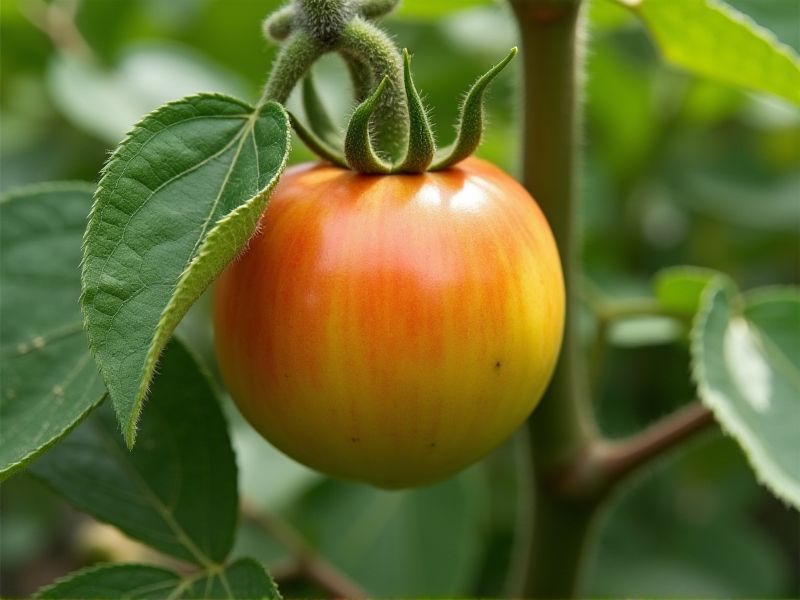
Fruit-bearing plants, such as apple trees, tomato vines, and blueberry bushes, are vital for both nutrition and agriculture. These perennial crops provide essential vitamins, minerals, and antioxidants, contributing to a balanced diet and overall well-being. Each plant species has unique growth requirements, including specific soil types, sunlight exposure, and watering needs, which are crucial for a successful yield. Harvesting these fruits at the right time ensures maximum flavor and nutritional value, enhancing your culinary experiences. Engaging in home gardening not only fosters self-sufficiency but also connects you to nature and promotes environmental sustainability.
List of some Fruit-bearing plants that yield harvest
- Apple (Malus domestica)
- Banana (Musa spp.)
- Cherry (Prunus avium)
- Grape (Vitis vinifera)
- Mango (Mangifera indica)
- Orange (Citrus sinensis)
- Peach (Prunus persica)
- Pear (Pyrus communis)
- Pomegranate (Punica granatum)
- Strawberry (Fragaria × ananassa)
Important things about Fruit-bearing plants that yield harvest
Types Of Fruit-Bearing Plants
Fruit-bearing plants are diverse and can be categorized into several types based on their characteristics and cultivation requirements. Trees like apple, citrus, and cherry provide bountiful harvests and often require more substantial care, including proper pruning and soil management. Shrubs, such as blueberries and raspberries, yield delicious berries and are typically easier to maintain in smaller garden spaces. Herbs like pineapple sage or fruiting plants like strawberries are perfect for smaller areas and container gardening, allowing you to enjoy fresh produce even in limited space.
Growing Conditions Required
Fruit-bearing plants thrive in a variety of growing conditions that significantly influence their yield. Optimal sunlight exposure, typically ranging from six to eight hours per day, is crucial for photosynthesis and healthy fruit development. Soil quality is equally important; well-draining, nutrient-rich soil with a pH between 6.0 and 7.5 fosters strong root systems and vibrant growth. Ensuring adequate water supply through regular irrigation, especially during dry spells, will enhance fruit production and contribute to overall plant health.
Pollination Process
Pollination is a crucial biological process for fruit-bearing plants, serving as the mechanism through which pollen from male reproductive structures (anthers) is transferred to female structures (stigma). This transfer can occur through various agents such as wind, insects, birds, and water, enhancing fertilization and subsequent fruit development. Successful pollination leads to the formation of seeds within fruits, ensuring the propagation of plant species and allowing you to enjoy a diverse harvest. Key fruit-bearing plants, such as apples, strawberries, and avocados, rely on specific pollinators, making biodiversity essential for optimal yields.
Seasonal Fruiting Patterns
Fruit-bearing plants exhibit distinct seasonal fruiting patterns that significantly influence agricultural practices. In temperate climates, many trees, such as apple and cherry varieties, bloom in spring, producing ripe fruit by late summer to early fall. Tropical fruiting plants, like mangoes and pineapples, often yield their harvest year-round, depending on rainfall and temperature. Understanding these patterns is essential for optimizing your cultivation techniques and ensuring a bountiful harvest.
Maintenance And Care Needs
To ensure successful harvests from fruit-bearing plants, regular maintenance and care are essential. You should provide adequate watering, as most fruit plants thrive in well-drained soil that retains moisture without becoming soggy. Pruning is crucial for promoting healthy growth and increasing yields, as it removes dead or overcrowded branches, allowing sunlight to reach fruit more effectively. Additionally, monitor for pests and diseases, applying organic treatments when necessary to protect your plants and ensure a bountiful harvest season.
Common Pests And Diseases
Fruit-bearing plants are susceptible to various pests and diseases that can affect their yield and quality. Common pests include aphids, spider mites, and fruit flies, each capable of causing significant damage to leaves and fruit by feeding on plant sap or laying eggs. Diseases such as powdery mildew, root rot, and bacterial cankers can lead to stunted growth, wilting, or complete crop loss. Regular monitoring, proper sanitation, and the use of resistant varieties are essential strategies for managing these threats to ensure a healthy and productive harvest.
Pruning Techniques
Pruning is an essential horticultural practice for managing fruit-bearing plants, helping maximize yield and improve fruit quality. Techniques such as thinning, heading back, and rejuvenation can significantly enhance air circulation and sunlight penetration within the canopy, promoting healthier growth. By selectively removing dead or overcrowded branches, you can direct the plant's energy into producing larger and more flavorful fruits. Proper timing and technique, tailored to each specific species, will ensure optimal results and a bountiful harvest for your garden.
Harvesting Methods
Harvesting methods for fruit-bearing plants vary depending on the type of fruit and the cultivation practices employed. Manual harvesting is common for delicate fruits like strawberries and blueberries, ensuring minimal damage and optimal ripeness. Mechanical harvesting, often used for crops such as apples and cherries, increases efficiency and reduces labor costs, though it may require careful timing to avoid bruising the fruit. Understanding the specific needs of your fruit-bearing plants can enhance yield quality and improve overall harvest effectiveness.
Storage And Preservation
Proper storage and preservation methods are crucial for maintaining the freshness and quality of fruit-bearing plants, such as apple trees, berry bushes, and citrus groves. Techniques like refrigeration, dehydration, and canning can extend the shelf life of harvested fruits, ensuring they retain their nutritional value and flavor. Understanding the ideal conditions, including temperature and humidity levels, is essential for preventing spoilage and mold growth in your fruit harvest. Implementing these practices not only enhances the longevity of your produce but also contributes to a more sustainable agricultural approach.
Nutritional Benefits Of Fruits
Fruit-bearing plants provide a variety of nutritional benefits essential for a healthy diet. Rich in vitamins, such as vitamin C and vitamin A, fruits support immune function and promote healthy skin. They are also high in dietary fiber, which aids digestion and helps maintain a healthy weight by promoting satiety. Including a diverse array of fruits, like berries, citrus, and tropical varieties, can enhance your overall nutrient intake and protect against chronic diseases.
